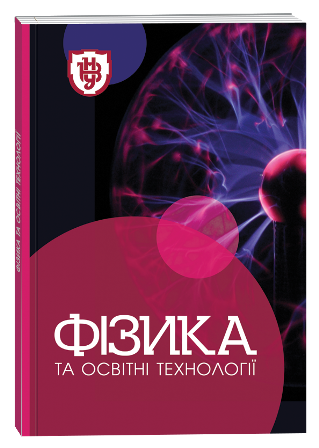PECULIARITIES OF THE METHOD OF FORMING VIRTUAL EXPERIMENTS ON LEARNING THE DISTRIBUTION OF MOLECULES BY VELOCITIES
DOI:
https://doi.org/10.32782/pet-2024-1-7Keywords:
fundamental experiments, virtual, distribution of molecules, particles, speedAbstract
The article is devoted to a little researched method of teaching gas phenomena. One of the variants of the technique and its features in the formation of virtual experiments on the study of the distribution of molecules by velocities is revealed. The emphasis is not placed on the possibility of setting up an experimental task to confirm J. Maxwell's conclusions, and what role is given to physical quantities: mass of particles, gas temperature, velocities, etc. Possible research methods, in particular virtual ones in the environment of spatial distribution of particles with different speeds, are not considered. It is highlighted that when deriving the equation of an ideal gas, a constant, equal velocity of all molecules is considered and, accordingly, the obtained results in the formulas are not considered so different from those considered by J. Maxwell, R. Clausis. It is proposed to resolve this confusion. One of the virtual experimental methods of spatial separation of particles based on velocities is proposed, based on the influence of gravity on the flight range of molecules that have flown out, for example, from a vessel. The implementation of the idea of a virtual experiment is based on known theoretical and practical conclusions: we have an ideal gas; known experimental results of arithmetic mean, root mean square and probabilistic velocities; the creation of a constant gas concentration in the vessel is real; the movement of molecules in the vessel is equally probable. The analysis of the data obtained in the virtual experiment shows three rather distinct parts: on the left, molecules settle with the average arithmetic speed, in the middle part – the most probable, and on the right – with the mean square speed, which qualitatively confirms Maxwell's mathematical model of the distribution of molecules. In the future, it is advisable to carry out research in the direction of modernization of this type of experiments and clarification of the physical essence of the concepts of momentum, pressure, kinetic energy of gas molecules.
References
Жихарєв В. М. Молекулярна фізика і термодинамічні властивості речовин. Ч. 1: Молекулярно-кінетична теорія ідеального газу: навч.-метод. посібник. Ужгород, УжНУ, 2017. 102 с.
Конспект лекцій з курсу «Молекулярна фізика і термодинаміка» для студентів напряму 6.040203 «Фізика» /Укл. Харитонова О.А., Борисова Г.В. Дніпродзержинськ: ДДТУ, 2016. 82 с.
Садовий М. І., Трифонова О. М. Історія фізики з перших етапів становлення до початку ХХІ століття: навч. посібн. 2-ге вид. переробл. та доп. Кіровоград: ПП «ЦОП «Авангард», 2013. 436 с.
Садовий М. І., Резіна О. В., Трифонова О. М. Використання комп’ютерної графіки під час навчання фізики і технічних дисциплін в педагогічних університетах. Інформаційні технології і засоби навчання. 2020. Вип. 80 (6). С. 188–206. DOI: https://doi.org/10.33407/itlt.v80i6.3740.
Хомутенко М. В., Садовий М. І., Трифонова О. М. Комп’ютерне моделювання процесів в атомному ядрі. Інформаційні технології і засоби навчання. 2015. Вип. 45 (1). С. 78–92. DOI: https://doi.org/10.33407/itlt.v45i1.1191.
Школа О. В. Методичні підходи до вивчення розподілу Максвелла-Больцмана в курсі теоретичної фізики. Вісник Чернігівського національного педагогічного університету. Педагогічні науки. 2013. Вип. 109. С. 294–298.
Ftáčnik J., Lichard P., Pǐsút J. A simple computer simulation of molecular collisions leading to Maxwell distribution. European Journal of Physics. 1983. vol. 4, рр. 68–71. DOI: https://doi.org/10.1088/0143-0807/4/2/002.
Krobthong Th. Teaching University Physics by Using Interactive Science Simulations Methods. Procedia – Social and Behavioral Sciences. 2015. vol. 197. P. 1811–1817. DOI: https://doi.org/10.1016/j.sbspro.2015.07.240.
LibreTexts. URL: https://ukrayinska.libretexts.org.
Sadovyi M. Digitization of the experiment in natural sciences as a means of information and digital competence formation of specialists in professional education. Modern Technologies in the Education System: monograph. Katowice, 2019. P. 203–210. URL: http://surl.li/elare.








